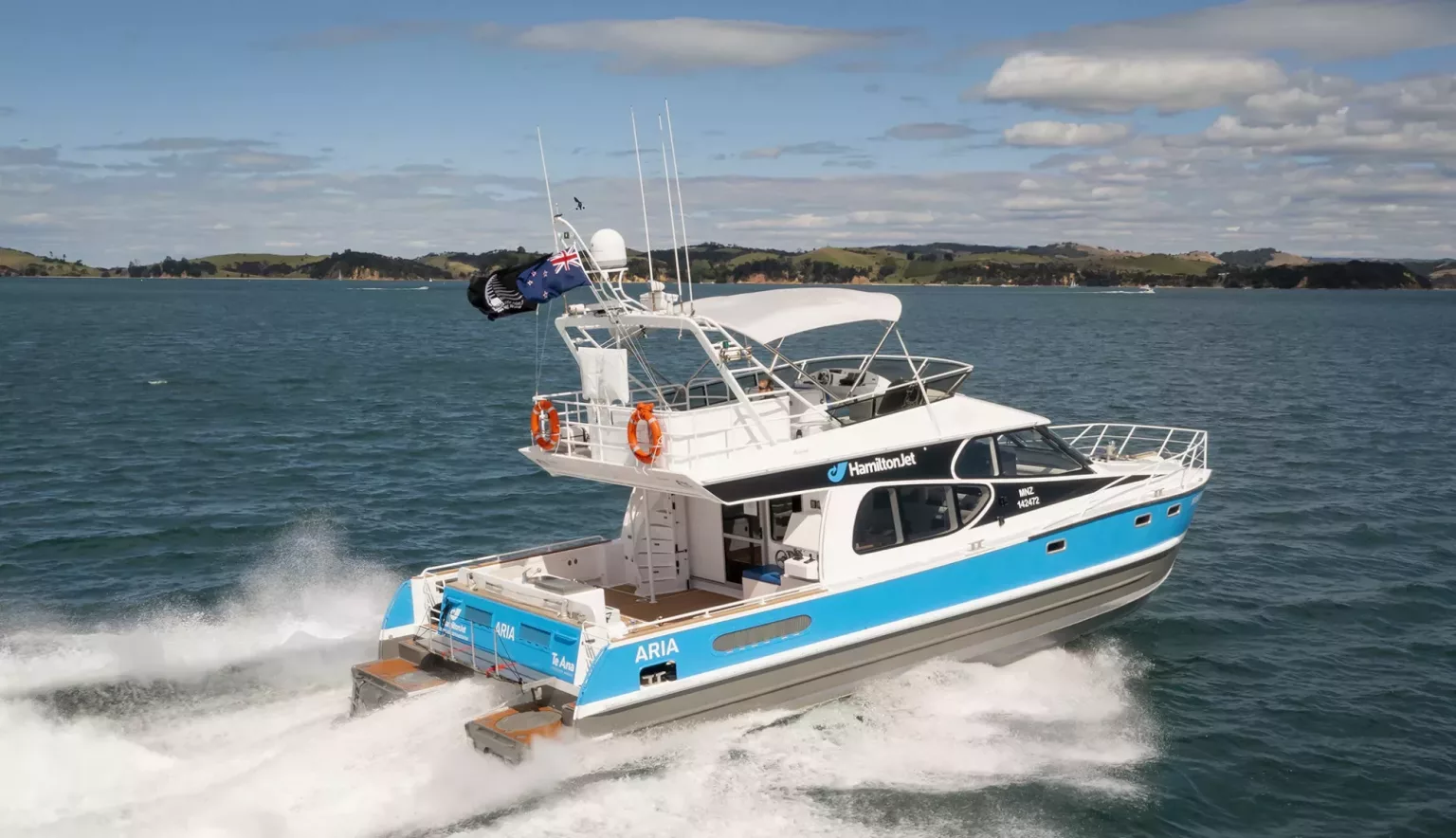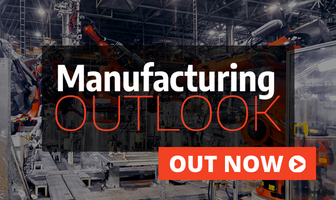Led by quality and innovation, we speak to Ben Reed, Managing Director of HamiltonJet, about the company’s varied and high-quality propulsion systems for the international boat market.
INTRODUCTION
It is often said that we punch above our weight for a remote nation of five million people!”
For Ben Reed, Managing Director of HamiltonJet, New Zealand is an innovative nation that holds a lot of promise.
“New Zealand only represents three percent of our total market. However, it is a great example of a forward-thinking country with high-value industries and professional operators that want the benefits our technology brings,” he explains.
“It also has a reputation across the globe as a center for marine innovation, with events like the America’s Cup showcasing how our challenging water conditions and Kiwi ingenuity have bred a fighting spirit and deep competence on the water.”
HamiltonJet are the world’s leading manufacturer (by market share) of waterjets and vessel control systems in the commercial and military space.
FROM PAST TO PRESENT
The company was founded in 1939 by New Zealand industrialist Sir William Hamilton, widely recognized as the grandfather of the modern waterjet. Today it employs 400 people in six countries; 350 of these people are based in Christchurch, New Zealand, where all design, development, manufacturing and business functions reside, with another three regional offices totalling approximately 50 staff in Singapore, London and Seattle collectively.
These regional offices support 55 distributors across the globe with parts, sales, and service support. 97 percent of HamiltonJet’s products are exported to its various customers all over the world, and the company provides products across multiple sections of the market. These include boats such as offshore, pilot, search and rescue, fire, patrol and military, wind farm, fast ferry, fishing, recreational, and aquaculture.
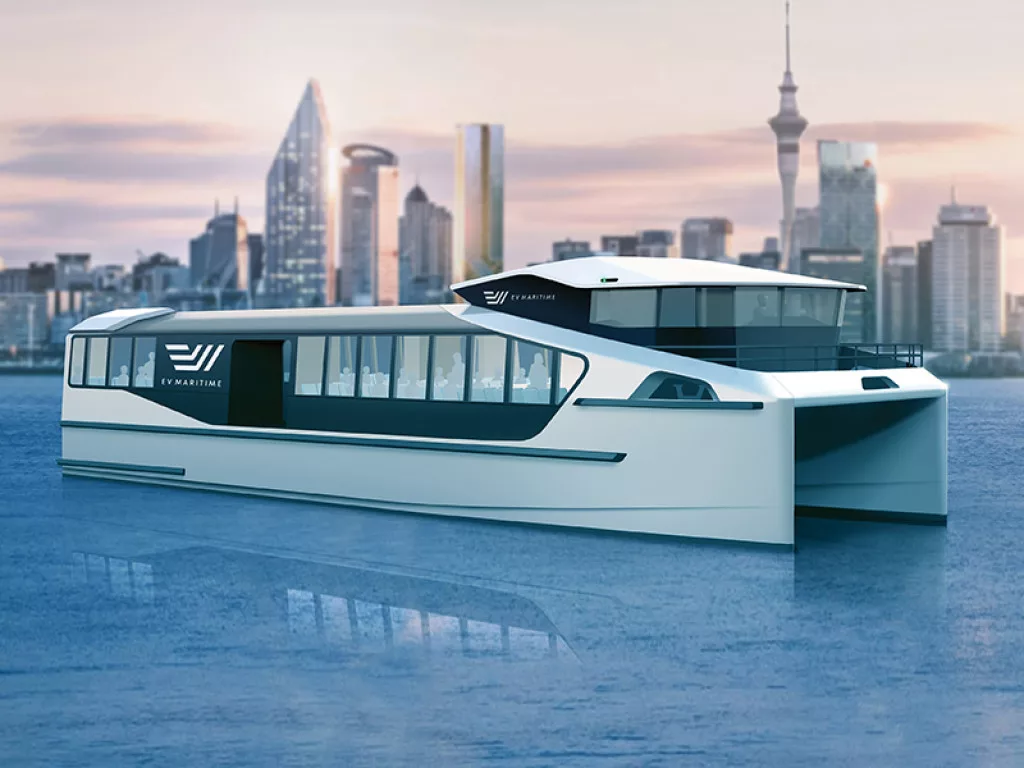
QUALITY CRAFT
“Our smallest jet, the HJ212 is found in small craft, upwards of five metres long. It weighs 80 kilograms and would usually be found in single or twin driveline form with simple cable actuated controls,” Reed elaborates.
“We then have another 17 different jet sizes, ending up with the HT1000; an 8,000-kilogram monster that would be found in pairs or quad configuration, in oil and gas or military applications, up to 70 metres with electronically controlled hydraulic controls.”
According to Reed, waterjets offer several advantages over alternative propulsion systems. They are efficient in their speed and manoeuvrability, and safe in the water (with no rotating appendage), as well as being suitable for shallow water areas.
“The manoeuvrability comes from the combination of a steerable nozzle and a deplorable reverse duct, which work together to give a fully vector-able thrust, 360 degrees round the jet unit,” Reed elaborates.
“As a result, they appeal to many customer types, including fast ferries, pilot boats, military, patrol, rescue, windfarm and offshore platform support, fire and ambulance boats, tourist vessels, and a small amount of higher value custom recreation builds.
“Not only do these vessels take their waterjets from HamiltonJet, but they also use our control systems, meaning the skipper is interfacing directly with HamiltonJet products (helms, levers, joysticks, displays etc) in order to pilot the craft.”
The advent of electronic controls has revolutionized the ease-of-use of these vessels and provided a ‘future ready’ platform for advancements like autonomy, driveline electrification and the general digitization of the modern vessel. Today, HamiltonJet is still focused on waterjets and related controls, ensuring that it knows the market and minimizing distraction from it.
“We think it makes us more responsive to our customers’ needs and focused on our efforts,” Reed informs us. “We also remain family owned, with a strong culture of care for our people and a commitment to remain operating from our home in Christchurch.”
INVESTING IN DEVELOPMENT
Over the last five years, HamiltonJet has ramped up its investment in its products and technological development. This is a fundamental element to the company’s strategy and covers multiple parts of HamiltonJet’s operation, as Reed elaborates.
“In the area of waterjets, we are working on gradually replacing our entire waterjet line-up with newer, more efficient, and more robust models,” he tells us. “Each new jet is coming in between three and seven percent higher in its propulsive efficiency than the model it replaces, delivering lower fuel consumption and higher speed.
“They also generate more thrust at lower speeds which is great for certain applications like wind-farm support. These new jet models are also easier to install and simpler to integrate.”
In the control systems space, HamiltonJet recently introduced a new electronic system designed to the most rigorous Class Authority standards – AVX.
“This, plus the soon to be released AVXexpress for smaller craft will replace both of our older control systems and offer a solid platform for future technology integration,” Reed explains. “Both systems offer multiple layers of redundancy, exceptional reliability and availability, and some truly innovative features. The best example is our GPS based control system called JETanchor which can automatically hold position and precisely manoeuvre a vessel with incredible accuracy.”
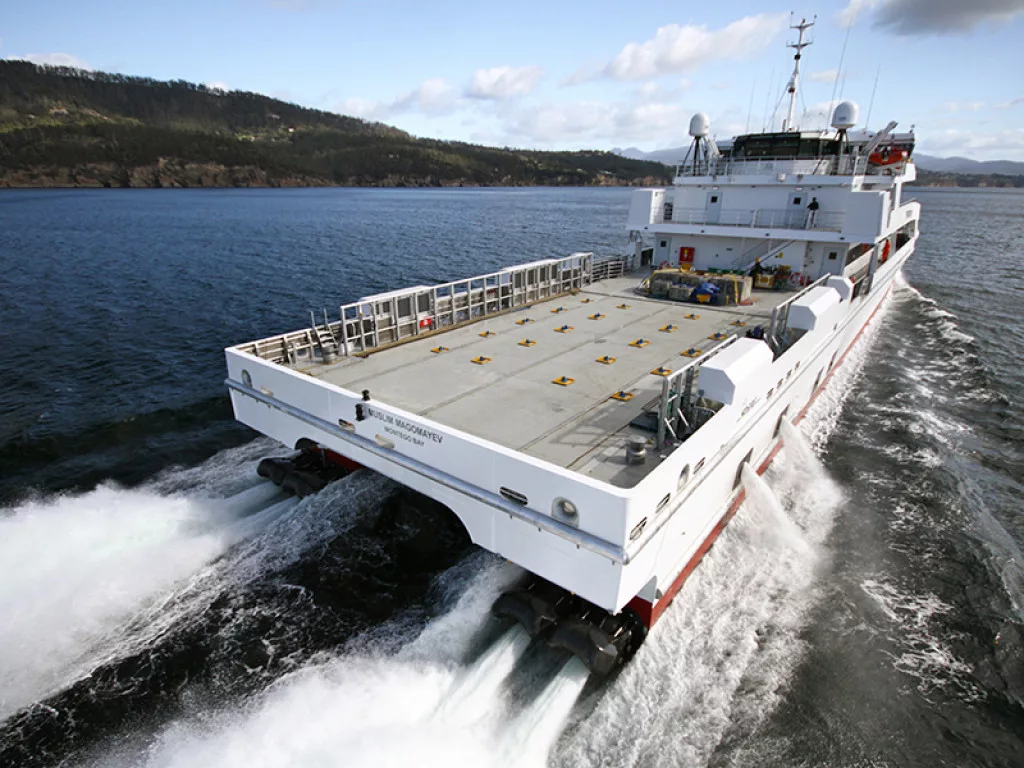
FUTURE TECHNOLOGIES
The marine industry faces three significant trends which are shaping HamiltonJet’s future product strategy: automation, electrification and digitization.
Automation
“Operators are increasingly looking at forms of vessel remote control, autonomy and skipper-assistance to improve safety and productivity,” Reed informs us. “The applications in this field include military (such as unmanned minesweeping), survey and oil and gas vessels.
“We have been working for over 20 years in this area and have over 170 vessels equipped with some level of autonomy or remote control around the world. We continue to work with all the leading manufacturers of autonomous systems, but more recently signed an agreement with Sea Machines Robotics to develop a HamiltonJet pilot-assistance tool that will be integrated at the helm and use an augmented reality vision system, fused with radar and AIS, to allow autonomous route following with collision alert and avoidance.
“This will be available sometime late 2022 and will be an option on all vessels with AVX electronic controls.”
Electrification
There is a global and industry-wide pressure to clean up the carbon footprint of the marine industry. Stemming from this, the area of electrification has become a key aspect of development for both the good of the environment and to answer the demand of the customer base.
“It has been surprising to us just how quickly this trend has gone from being something of interest, to a strong buying driver with operators willing to pay a premium for the right technologies,” Reed says. “Last year, we launched our own electro-hybrid drive system called EHX.
“Essentially it is an integration of batteries, electric motors, and diesel engines, and the system can also be used on an all-electric vessel. We were driven to do this after being involved with multiple projects where the detailed integration seemed to be left to the last minute.
“We wanted to grasp hold of the whole thing and deliver a fully integrated hybrid propulsion system that operated in a fully automatic mode, switching between power sources and optimizing the use of electrical energy. This product is now available to the market and the first installation we did was on our own vessel. We bought and converted a 15-meter foiling catamaran called Aria which is now capable of running nine knots on electrical drive only, diesel only (or charging the batteries) up to 37 knots and can boost performance with both together up to 42 knots.”
HamiltonJet deployed Aria at the America’s Cup in March as a showcase as to what could be achieved with this new technology. The system also boasts reduced sound when stationary or at low-speed cruising while using the electric option.
Digitization
Alongside the increasingly innovative electrification of engine systems, integrating digitization into products is a key demand, and one that HamiltonJet has answered.
“The modern vessel is an increasingly complex system-of-systems,” Reed elaborates. “The propulsion controls, navigation, alarms, hotel services, and other elements are increasingly intelligent and connected systems.
“As primary vessel controls, our system has the potential to be a central hub for information about the vessel. We are currently developing a vessel monitoring, data logging and IoT system to complement our products that will allow operators to interrogate their journeys and activities in absolute detail from the ship or the shore. It even captures data on the movements of vessels around them through AIS. This will ultimately support productivity optimization, preventative maintenance, issue response and accident investigation.”
BUILT TO SHIP
HamiltonJet’s business is unique in the waterjet industry in that the company truly manufactures its products. The company has a lean-production process delivering 18 different jet models over only two production flowlines. The process is designed around high-variety, low-volume and a hard to forecast model mix. Reed explains further; “It is a fully cellular, build to order, batch-of-one process utilizing four foundries, casting LM6 Aluminium, 316 Stainless and AB2 Bronze, over 50 CNC machines, fabrication, electronics assembly, hydraulics manufacture, paint and build,” he says.
“Over 90 percent of the weight of each jet unit manufactured is made to order from raw materials (ingot and bar-stock metals) inside our factories. We do have some bought-in items in our products, but these are relatively small in the whole picture, and we carry sufficient stock to manage our output.
“Our very short, simple supply chains have been a real asset during the pandemic and gave us a high level of confidence in the delivery of each shipset on time, in full. Whilst we are located in New Zealand, boat building is a global business, so we are all facing the need to use global shipping to distribute our products. One lasting effect of COVID-19 is that sea and air freight has become more expensive and harder to book, but we work well in advance with shipping lines and have a great success rate at getting our products to customers when we promised them.”
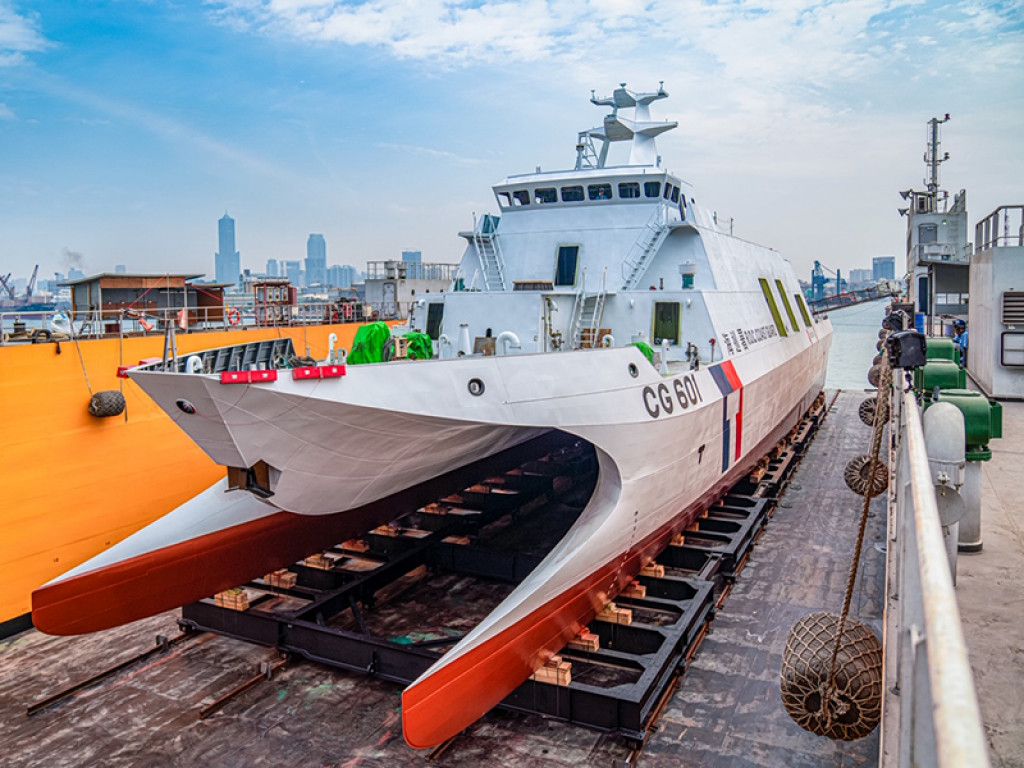
CHARTING 2021
For HamiltonJet, 2021 is looking like a busy year. According to Reed, there is an active increase in sales approaching pre-COVID levels, and on top of this, the company has a high number of high-profile projects in the electric and hybrid drive space.
“We have two new jet model releases (The HTX42 is imminent and the HJX27 at the end of 2021) and a ‘lite’ version of our control system called AVXexpress,” Reed tells us. “We will also be continuing our development work with Sea Machines on the pilot-assist system and a few other innovations. We are excited by the way all these releases will improve the operational effectiveness of our customers.”
These developments represent the next stage of the company’s movement towards addressing the increasing demands of its worldwide customer base. With promising projects in the works, it is worth keeping an eye on HamiltonJet as a leading player in the boat systems manufacturing space.

